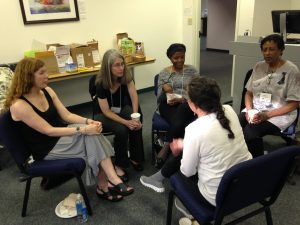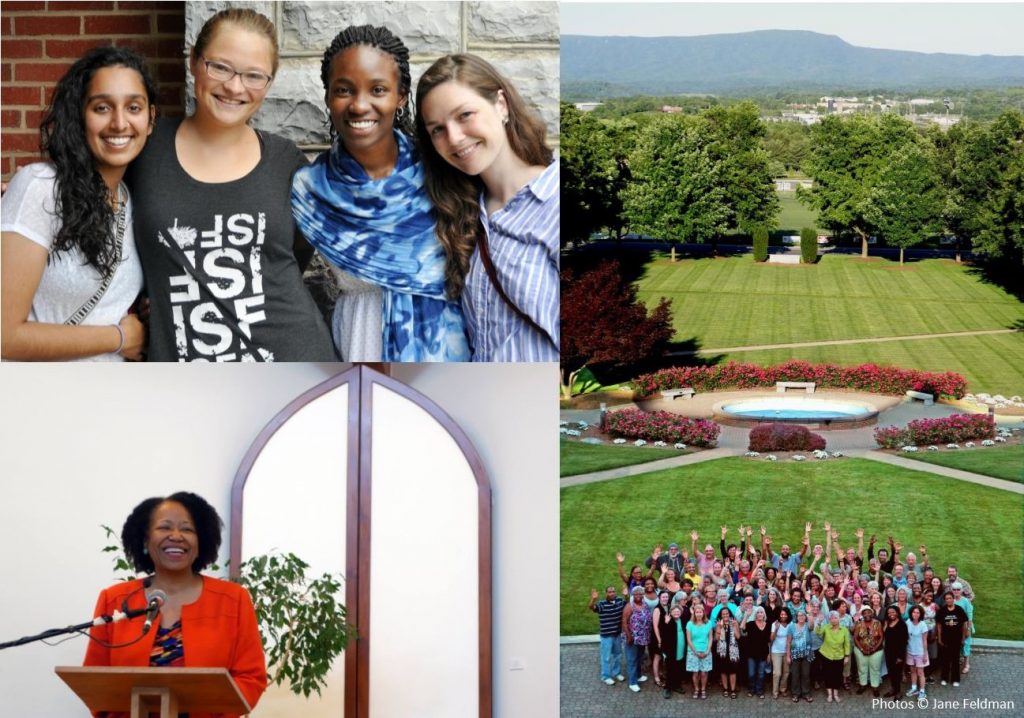More people dying. More funerals. More tears. More rage. More division. More frustration.
Many of us feel numb and helpless in the wake of the recent killings of Alton Sterling in Baton Rouge, Louisiana and Philando Castile in Falcon Heights, Minnesota by the police, and the killings of police officers Brent Thompson, Lorne Ahrens, Patrick Zamarripa, Michael J. Smith, and Michael Krol in Dallas, Texas, and Montrell Jackson, Brad Garafola and Matthew Gerald in Baton Rouge, Louisiana.
We struggle to figure out what we can do that will make any difference.
Our world desperately needs love, compassion, justice, truth, understanding, peace, and healing. We talk about these and other ideals every time such killings show up on social media and in the news; recorded on someone’s phone. But what can we actually DO in the face of racism, injustice, and terror? An all-too common theme heard in churches, community groups, schools, around kitchen tables, and elsewhere across the United States is a desire to have deep conversations about race that will actually make a difference but not knowing how to go about it.
In order to transform our world, we need to transform how we approach confronting the problem. Old, fear-based, us-versus-them reactions haven’t ever worked, yet we keep reverting to them. We need a fundamental shift in our approach if we are to achieve a fundamental shift in our world.
Last month, I participated in a 3-day Leadership Training Institute and 4-day National Gathering organized by Coming to the Table (CTTT), a non-profit organization I’ve been involved with since its inception ten years ago. After this week-long immersion into workshops, dialogue, and relationship-building experiences with a large group of deeply-committed people from all across the United States and Canada, I feel more strongly than ever that Coming to the Table offers valuable tools for people trying to figure out what to do. As another participant wrote,
“There are precious few forums where descendants of slaves and enslavers can engage in meaningful dialog about what the legacy of slavery has done to this country and how to move forward.”
 CTTT has a Vision for the United States of a just and truthful society that acknowledges and seeks to heal from the racial wounds of the past—from slavery and the many forms of racism it spawned. The Mission of CTTT is to provide leadership, resources, and a supportive environment for all who wish to acknowledge and heal these historic, traumatic wounds.
CTTT has a Vision for the United States of a just and truthful society that acknowledges and seeks to heal from the racial wounds of the past—from slavery and the many forms of racism it spawned. The Mission of CTTT is to provide leadership, resources, and a supportive environment for all who wish to acknowledge and heal these historic, traumatic wounds.
And let’s make no mistake. These recent killings – like so many before – all stem, at least in part, from the legacy of slavery in the United States; unhealed wounds around issues of racism that continue to haunt our nation.
I know from experience the Coming to the Table Approach to acknowledging, understanding, and healing these wounds can make a positive difference. It’s a practical approach that seeks to create a space where people who are serious about the work of undoing racism and oppression can feel safe-enough to participate deeply; to share their stories, listen to the stories of others, and see each other as ultimately-connected human travelers in this challenging journey of life. It’s more than creating a space for people to talk and feel better and go home. The CTTT Approach requires effort and commitment; a commitment to stay at the table when the work gets messy and hard, which it does and will.
The central framework within Coming to the Table is the STAR Program; Strategies for Trauma Awareness & Resilience. STAR brings together theory and practices from neurobiology, conflict transformation, human security, spirituality, and restorative justice to address the needs of trauma-impacted individuals and communities. Traumatic events may have a range of harmful effects on everyone involved, including victims, perpetrators, witnesses, bystanders, health professionals, law enforcement or military, clergy, family, and friends. If the traumatic wounds are not addressed and healed, they will persist and have further harmful impacts, and be passed on to future generations.
Two resources that help create a safe-enough space for this work are Touchstones and the Circle Process. Touchstones are a set of principles people agree upon when beginning “deep dialogue” together. Some examples of such agreements might include being 100% present, listen deeply, be open to new ideas, agree not to try to “fix” or correct others, maintain confidentiality, expect non-closure. More examples can be found here. Touchstones allow groups of people to establish ways of “being” with each other; to create a “container” for the often-difficult conversations to follow.
The Circle Process is another way to create a container for participants to feel safe enough to be in the space; often with people they consider to be “the other,” and perhaps even perceiving a threat to their safety or mental or emotional well-being. As Kay Pranis writes in The Little Book of Circle Processes, this tool “draws on the ancient Native American tradition of using a talking piece, an object passed from person to person in a group and which grants the holder sole permission to speak.” Utilizing the Circle Process is a way of bringing people together in which everyone is respected, has the opportunity to speak without interruption, share their stories, and where everyone is equal. Pranis also notes that Circles can create a container strong enough to hold anger, frustration, joy, pain, truth, conflict, diverse world views, intense feelings, silence, and paradox.
The Coming to the Table Approach to achieving the above Vision and Mission involves four interrelated practices. Uncovering History includes researching, acknowledging, and sharing personal, family and community histories of race with openness and honesty; Making Connections to others within and across racial lines in order to develop and deepen relationships; Working Toward Healing is exploring how we can heal together through dialogue, reunion, ritual, ceremony, the arts, apology and other methods; and Taking Action, actively seeking to heal the wounds of racial inequality and injustice and to support racial reconciliation between individuals, within families, and in communities. For a more thorough understanding, download the free CTTT workbook, Transforming Historical Harms.
As Michelle Alexander recently wrote,
“I think we all know, deep down, that something more is required of us now. This truth is difficult to face because it’s inconvenient and deeply unsettling. And yet silence isn’t an option. On any given day, there’s always something I’d rather be doing than facing the ugly, racist underbelly of America. I know that I am not alone. But I also know that the families of the slain officers, and the families of all those who have been killed by the police, would rather not be attending funerals.”
This work of undoing and replacing racist structures and systems – in our nation and in ourselves – is hard. It takes courage and commitment. If we are to make a difference, we need a different approach. There are many organizations and individuals doing important and powerful work to confront racism and injustice. The Coming to the Table Approach offers a way in which all the other stuff we are trying to do can work better.
When we decide, as a human family, that love, compassion, justice, truth, understanding, peace, and healing are more important than skin color and ethnicity, political parties and religious affiliation, who wins and who loses, who’s right and who’s wrong, and our fear over what we might lose when we create a just and equal society, we can transform our world. If we are ever to break free from these cycles of violence we continue to find ourselves caught up in, we have the responsibility to do the work. The Coming to the Table Approach can help.

